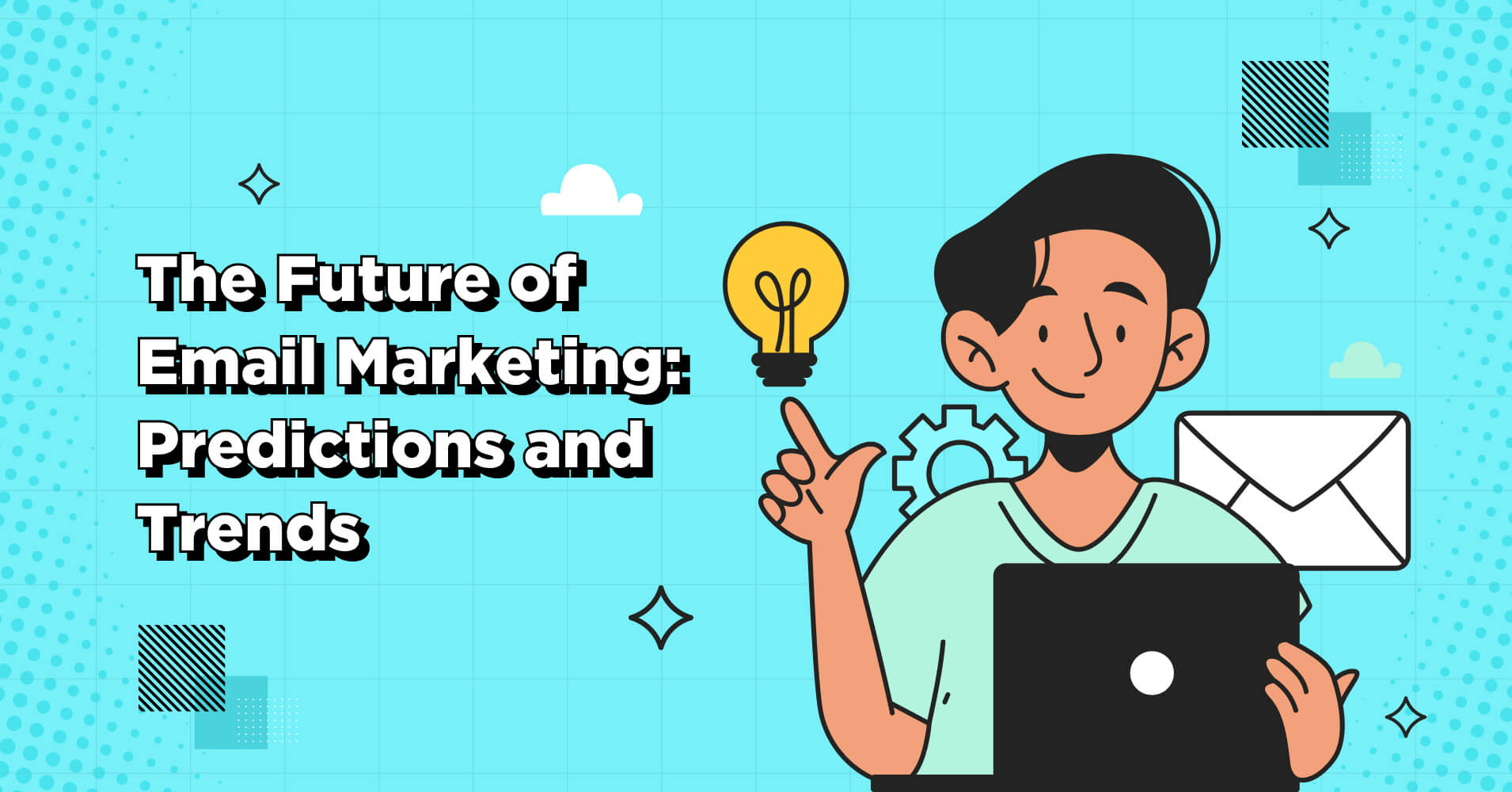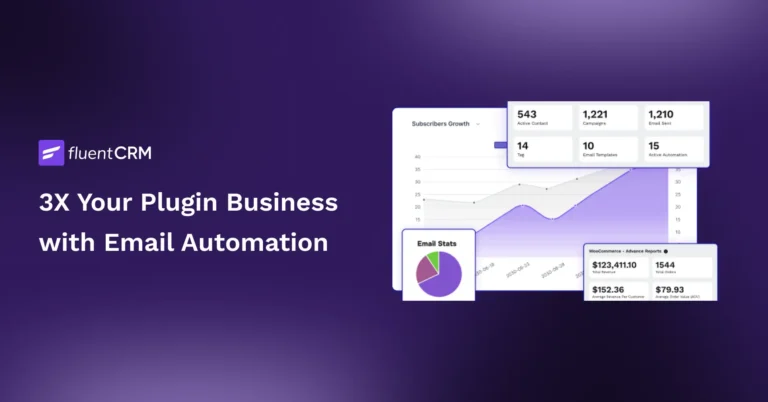
The Future of Email Marketing: Predictions and Trends
Recent statistics have shown that 361.6 billion emails are exchanged daily. No wonder getting your mail read in an over-flooded inbox is so hard!
This still proves the significance of email marketing and why this is the best approach to reach out. This implies that current email marketing trends might assist a business in finding more clients or customers within a limited duration.
As such, companies need to keep abreast of the contemporary methods of Internet marketing to attract more clients and customers through shortcuts.
This article will tell you about future predictions, such as AI-driven personalization and interactive content to enhance your email.
Let’s start!
Key benefits of using email marketing
If you’ve already started using email marketing, you’ll know some of the benefits it entails, but there is still a lot more to it, like:
- Cost-effective marketing strategy: Contacting numerous potential buyers for free is possible. Email marketing campaigns are less expensive than conventional advertising tools like print and TV adverts. It goes big for businesses that need more resources.
- High return on investment (ROI): Email marketing is very effective because, on average, it produces a return of $44 for every dollar invested. Through email marketing, organizations can reach targeted populations and create customized communications that will likely translate into sales.
- Fastest-growing communication technology: Businesses continue using email as an efficient medium, with millions of emails sent and received daily. Studies reveal that 99% of consumers browse their mailboxes each day.
- Creating personalized content: In this regard, it is vital to ensure the relevancy of the email by creating customized content that touches your audience. It also lowers the possibility that your emails get archived or erased. Studies show that most consumers would be more willing to purchase from businesses that will offer a personalized experience to a consumer.
- Increased traffic to your website: It helps to attract more traffic by sending emails with hyperlinks to your site. It also guarantees subscribers access to the latest news and updates you post. For example, a statistic indicates that by including a video in your email, your click-through rate increases by 300%.
6 trends to look for in email marketing
Email marketing is always active in its attempts to get new customers and leads. New trends are evolving and you need to exploit them to stay in the game.
We have enlisted the top trends to look for and take advantage of. Let’s discover each of them:
Mobile-optimized design
As people race off to attend various meetings and go about their work, checking and sending emails using mobile devices becomes increasingly common. Hence, you need to ensure your email is responsive. Simply follow the following tips to design mobile-optimized emails:
- Create responsive designs: A responsive design ensures that emails are correctly shown while making them legible when using any device. In addition, this is crucial since a bad mobile experience could lead to increased unsubscribe rates and diminished engagement.
- Keep subject lines short: Get to the point! Simply write five words about what the email means for your reader to comprehend your idea. A short copy also means a clear and straightforward way of delivering messages.
- Avoid large blocks of text: The email has a straightforward layout that directs the users forward while urging them to do what is expected.
- Testing emails: Test for success! Sending a dummy email before is a must before one sends it. Testing ensures the email is displayed as intended across different devices and email clients. In this step, they determine whether design or formatting errors will make it difficult for the reader.
Dive into our article for further understanding of mobile-optimized emails.
Automation and artificial intelligence
Email marketers can benefit from automation and artificial intelligence (AI). This includes enhancing efficiency in the campaign process, creating individualized customer experiences, and speeding up data analysis, among others. It also takes less time and makes it easy to address several people at a go.
Email automation and AI can benefit you in the following ways:
- Automation for workflows: For instance, a welcoming e-mail may be sent automatically after someone has signed up for the newsletter, and an e-mail reminding of carts left unpaid could be sent after some time once someone abandons the shopping cart. The automated process provides ample time, delivering accurate messages to proper audiences during convenient times.
- AI creates personalized experiences: AI algorithms help marketers determine what customers like, need, and want by analyzing their data and behaviors. The data generated here can be leveraged and used in sending relevant and directly targeted emails, thus improving engagement, conversion, and customer retention.
- Collecting and analyzing data by automation and AI. Marketers can learn more about their emails using AI algorithms capable of processing massive input data. It could be open rates, click-through rates, conversion rates, or other metrics of such information.
Interactive emails and user-generated content
This is how cold email outreach turns into warm emails that are both engaging and cause readers to be hungry for more information sent by the sender. These approaches provide unprecedented means of building affinity for and interacting with the audiences.
- Creating an immersive user experience: Marketers employ various components like moving image displays, sliding bars, collapsible boxes, and interactive forms for the audience’s attention and participation. Such a degree of interaction improves consumer experience and increases click-throughs because recipients are apt to engage with the offer in the email.
- Integrating user-generated content: The email campaigns are used to improve interactivity and credibility. Surveys, polls, and interactivity features make the recipients an integral part of the communication where they are considered and heard. Besides, marketers can understand what is hurting their recipients and what they want.
Dark mode design
Nearly 82% of mobile phone users prefer a dark mode of display. Therefore, email marketers should optimize their e-mails for the best “eye-friendly‟ aesthetic–dark mode.
To effectively optimize emails for dark mode, the following strategies can be implemented:
- Use dark mode-friendly colors: Therefore, ensuring the selected colors are compatible with dark mode is crucial. Readability is ensured by using lighter shades for text and background.
- Outline transparent PNG images in white: Transparent images may seem blurred or invisible when viewed against a dark background. Outlining these pictures using white lines helps hold water off the integrity and increase their aesthetic appeal.
- Test email templates in dark mode: Testing them on different email clients and devices is vital before email campaigns. Consequently, this helps to make the needed changes to ensure uniformity and enhance the general user experience.
Addressing privacy concerns
Email marketers must prioritize privacy as it becomes of the essence to observe transparency issues regarding data collection and privacy infringement risks at an epoch characterized by abuse of personal information.
Follow the following tips to ensure data privacy and email reputation:
- Following new privacy laws: With the recent rise of the amendment, ADPPA, organizations must develop necessary solutions to tackle these issues. For instance, like the GDPR and CCPA, ADPPA offers similar protection measures for personal consumer information by regulating its collection, processing, and sharing.
- Invest in secure email service providers: Prioritize data protection and encryption! Businesses should, therefore, engage credible partners to protect data relating to their customers.
- Implement a consent management platform: It enables individuals to expressly agree on their data usage to gain consumers’ trust. They should also observe regulations like GDPR and CCPA, which are frameworks that help companies collect and use data responsibly).
Personalized content
Email marketing has the great significance of being personalized. Increasingly, consumers and clients expect content with which they can identify or identify themselves to be incorporated into email marketing.
Here are some tips on how to ensure good personalized content:
- Do your research: Identify your potential recipients and discover which topics will catch their attention; only you can compose your message.ICENSE: Feel free to use this file in whole or in part for any purpose without providing attribution to it. this way, the intended audience will be provided with accurate data.
- Tailor your email: Ensure that every email you send has a tone that shows it was written specifically for the particular reader involved. Use the standard template and customize its parts for more personal information.
- Go the extra mile: People want to feel you have done more than enough for them. Include all their potential questions and needs in your email to ensure everything is understood.
6 predictions for the future of email marketing
Email marketing doesn’t stop at new upcoming trends, but more predictions will be discovered in the coming years, starting from 2024.
Following are the predictions made by the experts and you should look closely at them:
More focus on subject lines and content quality
The subject line has become a powerful tool to grab the recipient’s attention and increase open rates.
Deciding on which compelling subject lines to use has become essential in capturing the interest of potential customers. With the average person receiving countless emails daily, a catchy and personalized subject line can make all the difference. It attracts the recipient to click and explore the contents of the email.
However, the first step is getting the recipient to open the email. High-quality content is essential in ensuring that the email provides value to the reader and encourages engagement. From well-written copy to visually appealing design, every aspect of the email should be carefully curated to deliver a meaningful and relevant experience.
Marketers can better connect with their audience and drive higher engagement rates by focusing on subject lines and content quality. The key lies in creating subject lines that pique curiosity and content that resonates with the reader’s needs and interests.
The use of Automation and AI
In subsequent years, more automation and AI will ensue on a larger scale. Such tools can transform the customer’s experiences and make email marketing campaigns more personalized and interactive.
Automation allows marketers to streamline their campaigns, simultaneously sending highly personalized messages to many targets. By analyzing consumer data and behavior, AI algorithms can automatically segment audiences according to their needs and send personalized content resonating with each unique recipient.
This high level of personalization guarantees that every single customer will be hit with only relevant messages during timely intervals, thereby increasing their chances for conversion and boosting the overall relationship between the customer and the company.
Marketers can use automation and AI to create customer journeys and connect emails with other touchpoints smoothly. The development of these advanced technologies in marketing has aided marketers in optimizing email content by looking at critical indices, thus improving marketing strategies.
Automation can even go as far as analyzing subject lines and email layout so that the marketer gets information on what makes an individual open a mail, click through, or convert.
Improved segmentation strategies
In the coming year, improved market segmentation tactics will allow companies to provide meaningful and customized content for their customers.
Separating subscribers into more distinct and specialized segments allows for customizing every group’s demands and preferences in an email campaign.
Additionally, AI and machine learning algorithms would look deeper into lots of data as they would analyze the data to find the trend or pattern that could help predict customer behavior. Businesses can now provide custom content and offers for every segment they aim to reach, raising their chances of conversion and interaction.
An increase in transactional emails
The business’s email in the next generation will be mainly transactional email. Transactional messages are relevant for sending them critical details of contact with the brand when it comes to communication with consumers through email. These emails include password resets, purchase confirmations, shipment information, and delivery confirmations.
Transactional emails are essential modes of communication and contribute significantly towards ensuring reliability and creating credible customer experiences. A brand would provide its customers with correct details on their order or account activity and improve their experience with the brand at large.
Such transactional emails could also be used for sale announcements and promoting goods or services. This also notifies the customers if strange activities are happening on their account. It also promotes customers’ privacy and security.
Enhancing click-through rates and conversion rates
Click-through rates suggest the number of recipients who did not only open the mail but also went ahead and clicked on the link/call to action in the mail. It measures the recipient’s engagement and interest, demonstrating that he/she deemed the content significant enough to act on it further.
Conversion rates go an extra mile and measure the final objective of the email campaign, which can range from purchases signing up, among others. It shows that an email campaign had a direct positive impact on this particular outcome, which is very important for calculating the actual ROI of the campaign.
Email marketers need to move away from open rate and measure each email’s actual impact on achieving the given marketing goal. Marketers will get further information from the highest engagement and outcomes of their email campaigns by tracking click-through and conversion rates. Other metrics like CTR and conversion rates can help assess email marketing campaigns’ performance.
Some of these metrics entail unsubscribe rates that indicate how much interest the recipients have in the message sent as well as the relevancy to their needs; forward rates which reflect the involvement as well as the probability of word-of-mouth marketing; and revenue per mail that directly tie-up to
Using omnichannel marketing
Lead nurturing can also be implemented using omnichannel marketing. Omnichannel marketing aims to meet the customers while searching in various marketing channels and ensuring that they are visible and are compared with competitors quickly before making any decision.
There are numerous steps involved in developing a successful omnichannel marketing strategy. Hence, in the days to come, email marketers will move out through more developing communication routes with the consumers through them. Here are some examples:
- Organic search
- Organic social
- Online E-commerce marketplaces
- Social media ad re-marketing
Where to from here?
Email marketing for the future is fascinating. Consumers are now highly cautious about the privacy of data, which remains a crucial issue. Email marketers need to be transparent about these challenges to stick to the guidelines for handling customer information.
Knowing how to use different marketing techniques and tailoring your emails will help you get a higher click rate and ensure your email is read.
Make sure you research your target audience and see their interests to keep your email short yet informative. Your email should be memorable and keep readers wondering what the following email will be.
Editorial Panel
FluentCRM Editorial Panel is a group of content writers experienced with digital tools, marketing, and business trends.






Leave a Reply